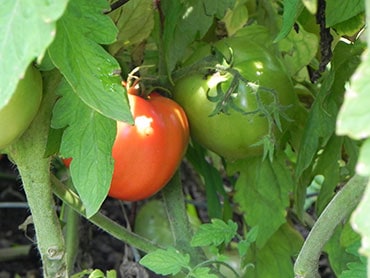Local Eats: The Importance of Healthy Food
“The healthiest food” argued writer Wendell Berry “is the shortest distance from the Earth to your mouth.” In this program, children will learn where their food comes from through interactive and educational activities. They’ll visit our organic garden and solar straw bale greenhouse. Students will harvest fresh herbs and they’ll make a healthy snack using our solar oven. Subjects such as the benefits of active lifestyle and healthy eating will be emphasized so that students will gain a new appreciation for healthy local food and make more informed choices the next time they are choosing their meals.
Curriculum Links
- C1. Understanding Health Concepts Healthy Eating
- C1.1 demonstrate an understanding of how the origins of food (e.g., where the food is grown…) affect its nutritional value and environmental impact … Teacher prompt: “… What is the environmental impact of processed foods?” Student: “… The way processed foods are made and the way they have to be shipped can make air pollution and other environmental problems worse. Manufacturing them can also make water pollution worse, and the packaging they come in creates extra garbage.” Substance Use, Addictions, and Related Behaviours
- C1.2 demonstrate an understanding of different types of legal and illegal substance abuse … and the impacts of abusing these substances on themselves and others (e.g., … environmental issues)
- Human Development and Sexual Health C1.4 identify factors (e.g., … environment, …) that affect physical development … and/or emotional development
- C3. Making Connections for Healthy Living Healthy Eating
- C3.1 explain how local fresh foods and foods from different cultures … can be used to expand their range of healthy choices
Pre-Camp Kawartha Visit
Concept map (can be done outside)
What does the word healthy mean to you?
Guided Inquiry (can be done outside)
How can we create a meal using only seasonal and local ingredients?
Edible Plant Parts Activity: “Students play a game to learn the different parts of different types of common food plants.
Make Soup!
Share the story of the three sisters in the traditional sense (ideally invite an elder or knowledge keeper into the classroom).
Talk about some more contemporary initiatives: See Example here.
Make Three Sisters soup! Here is one simple recipe.
This is a great cross-curricular connection to social studies.
5,4,3,2,1 – Observe (as described here.
Be outside with your class.
Ask them to note the following:
- 5 things they see
- 4 things they feel
- 3 things they hear
- 2 things they smell
- 1 thing they taste
Fruits from Afar Relay: “It takes a lot of energy to transport fruit from far away to our grocery stores.

